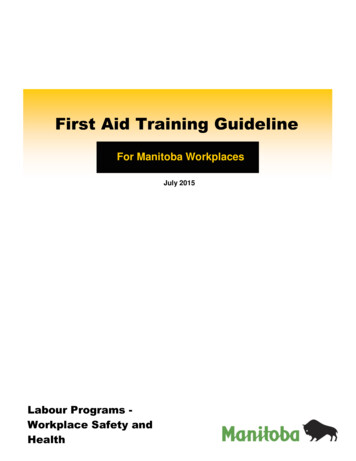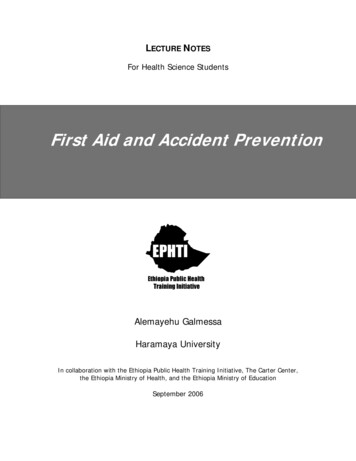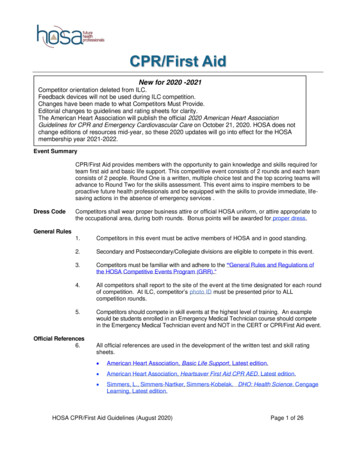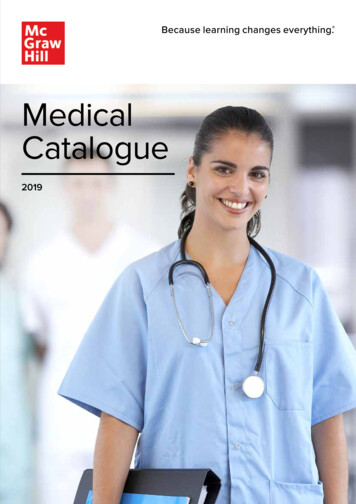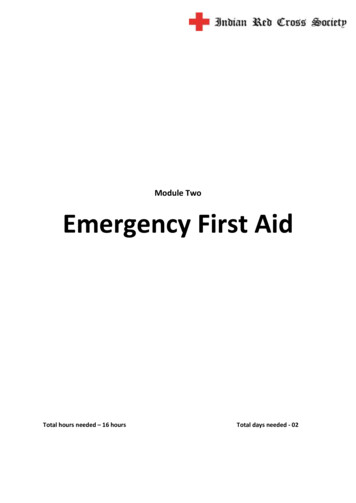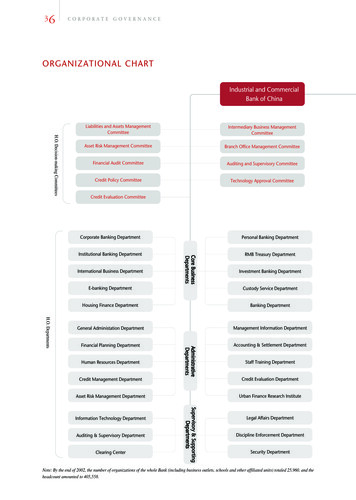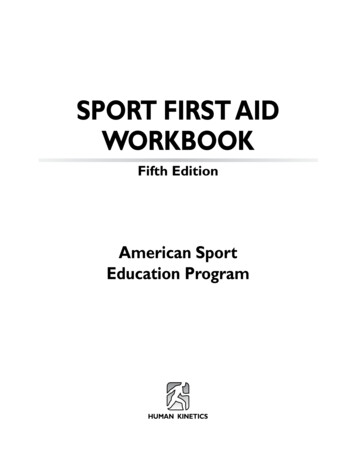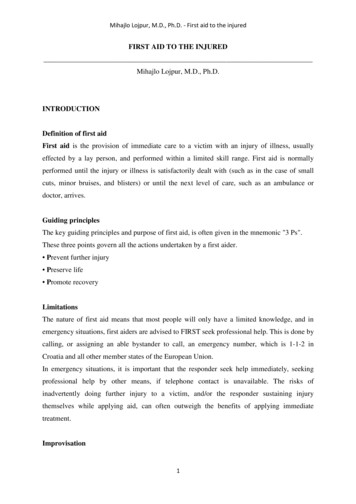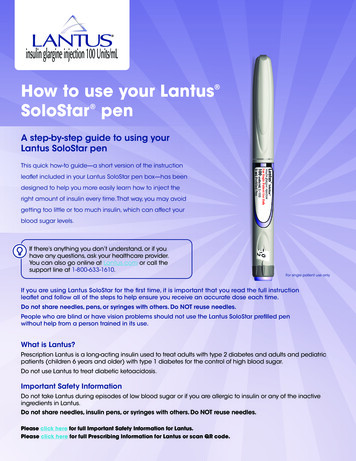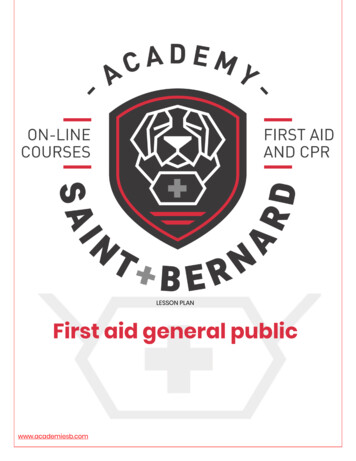
Transcription
FIRST AID0870/002 06.2010 2500in armed conflicts and other situationsof violenceFIRST AIDin armed conflicts and other situationsof violenceInternational Committee of the Red Cross19, avenue de la Paix1202 Geneva, SwitzerlandT 41 22 734 60 01 F 41 22 733 20 57E-mail: shop@icrc.org icrc.org ICRC, April 2006
FIRST AID0870/002 06.2010 2500in armed conflicts and other situationsof violenceFIRST AIDin armed conflicts and other situationsof violenceInternational Committee of the Red Cross19, avenue de la Paix1202 Geneva, SwitzerlandT 41 22 734 60 01 F 41 22 733 20 57E-mail: shop@icrc.org icrc.org ICRC, April 2006
FIRST AIDin armed conflicts and other situationsof violenceTo all the men and women who come to the rescueof their fellow human beings, demonstrating everyday, through their discreet and disinterested actionand sometimes at the risk of their own lives, thatcaring and respect for others bring meaning to lifeand give us all reason for hope.
FIRST AIDFOREWORDFirst Aid is not simply performing artificial respiration, bandaging a wound ortaking an injured person to hospital. It is also taking someone’s hand, reassuringthe frightened, giving a bit of one’s self. In armed conflicts and other situations ofviolence, First Aiders take the risk of suffering harm from such dangers as gunfire,collapsing buildings, burning cars, unstable rubble and tear gas. They step forwardto help the wounded when the most natural reflex would be to run the otherway. Ultimately, providing First Aid puts one’s self on the line, for no one comesout of these close encounters with others, in times of crisis, unscathed. First Aidershave enriching experiences, it is true, but they must sometimes cope with despair,when – despite their best efforts, despite all their skill – the breath of life they havestruggled to maintain slips away. Through their commitment, their selflessness andwillingness to expose themselves to possible physical and psychological harm,First Aiders demonstrate their humanity in the fullest sense of the term, and weowe them an immense debt of gratitude – all the more so because they frequentlyperform their tasks away from the “limelight”, seeking not to be recognized but onlyto help others thereby giving added meaning to their lives.Turning to the ideals of the International Red Cross and Red Crescent Movement,there is a particular meaning attached to providing First Aid in situations of violence.It is in keeping with the humanist vision of a world in which the dignity of an enemydeserves as much respect as that of a friend or indeed as one’s own dignity. Thegesture is disinterested. It carries no political meaning or message, although it mayhave a political impact when it symbolizes international solidarity. He or she whodresses the wounds of another, listens and offers renewed hope, is not defending acause. First Aiders are impartial, neutral, independent and not prompted by desirefor gain. Above all, they are humane, as was Henry Dunant, the Movement’s veryfirst First Aid worker, on the battlefield in Solferino in 1859. Let us recall the wordshe used to describe what he felt as he surveyed the scene: “The feeling one hasof one’s own utter inadequacy in such extraordinary and solemn circumstances isinexpressible.”It would be a mistake to see in a First Aider nothing more than a local actor inthe dramatic events unfolding around him, be it an armed conflict, a violent streetdemonstration or a natural disaster. The significance of what First Aiders do isuniversal: not only because they belong to a Movement that carries out relief workall over the world but also because every day their actions create bonds that triumphover differences, prejudice and intolerance. First Aiders do not live in a world where“civilizations clash” with one another, in a Manichean universe in which everyonemust take sides. To be sure, First Aiders have their own ideas, political opinions,
FIRST AIDsecular or religious convictions, and identities, but they succeed in transcendingthem. And they build bridges. Such feats are not within everyone’s reach.First Aiders are there when you need them, and they steadfastly remain by yourside. They do what they can to prevent emergencies through awareness-raising,training activities and vaccination campaigns. At the same time, they preparethemselves to swing into action in the event that an emergency does occur and torally others to join with them. In crisis situations they interrupt their everyday livesand take selfless action without concern for the time or energy involved. Yet, theyare well compensated for their personal sacrifices before, during and after a crisisby what they receive from the men, women and children in difficulty whose pathsthey cross and with whom they remain for as long as it takes to ease their pain andsoothe them in their distress.Because of all that they represent, all that they do and all that they are, the menand women who become First Aiders bring us comfort at a time when people fightin a bid to secure power or material goods, in the name of beliefs or ideologies, inpursuit of nationalist interests, and for so many other reasons. All these spirals ofviolence combine to leave us vulnerable, frightened, stunned and shocked. We findit hard to believe in mankind, to hope for a better world for our children, to lookforward to the future that will be theirs. We almost feel guilty about leaving themsuch a legacy of danger and violence.And then our paths cross those of a First Aider, on the battlefield, in a riot, inour street or simply on a television screen, and we are moved. We admire theirresourcefulness and are impressed by their quickness and skill. We are filled withconcern when we see their features drawn with fatigue, their spattered faces andtheir bruised hands. Hope returns. First Aiders leave their mark of humanity not onlyon the lives of the sick and wounded but also, in a certain way, on ours.Marion Harroff-TavelPolitical Adviser to the ICRC
FIRST AIDTable of contents1. Introduction52. Armed conflicts and other situations of violence2.1 Types of situations2.2 Special characteristics1517183. First Aider preparedness3.1 The humanitarian role of First Aiders3.1.1 Know and respect the distinctiveemblems and the basic rulesprotecting individuals3.1.2 Strengthen your moral standingand the image of the Red Crossand the Red Crescent3.2 The duties and rights of First Aiders3.2.1 Duties of First Aiders3.2.2 Rights of First Aiders3.3 Specific training programmes3.3.1 Technical skills3.3.2 Personal capabilities3.4 Equipment of First Aiders3.5 Preparatory plans3.5.1 As a rule3.5.2 During the mobilization phase3.5.3 On site3.6 Coping with stress23252528303031323233404343434446
FIRST AID4. Caring for casualties4.1 Goals and responsibilities4.2 Context4.2.1 Threats4.2.2 Specific health problems4.3 Main operational principles for providing care4.3.1 The chain of casualty care4.3.2 Communication, reportingand documentation4.4 Your approach on the spot495152525354545. Situation management5.1 Safety and security5.1.1 Your personal safety5.1.2 Security assessment of the scene5.2 Casualty protection5.2.1 Emergency removal of a casualty5.3 One casualty or many?5.4 Seeking help5.5 Alert6569717578788283846. Casualty management6.1 Initial examination and immediatelife-saving measures6.2 Complete examinationand stabilization measures6.3 Special cases6.3.1 Anti-personnel minesand other explosive remnants6.3.2 Tear gas6.3.3 The dying and the dead6.3.4 Cardiac arrest875762931001051051061081117. Situation of mass casualties: triage1138. After providing care on the spot8.1 At the collection point and in the next linksin the casualty-care chain8.2 Transportation8.2.1 Prerequisites8.2.2 Means and techniques of transport121123124124126
Table of contents9. Other tasks of First Aiders12910. After the intervention10.1 Management of yourself10.1.1 Debriefing10.1.2 Relaxation10.2 Management of equipment and supplies10.3 Awareness of explosive remnants of war10.4 Contributions to the recovery of the population10.4.1 Red Cross/Red Crescent presence10.4.2 Promotion of humanitarian work10.4.3 First Aid fe-saving techniques1496.1.1 Airway: assessment and management1516.1.2 Breathing: assessment and management 1586.1.3 Circulation: assessment and managementof visible haemorrhage1646.1.4 Disability: assessment and management 1726.1.5 Exposure: assessment and management 178Stabilization techniques1816.2.1 Head and neck injuries: assessmentand management1836.2.2 Chest injuries: assessmentand management1886.2.3 Abdominal injuries: assessmentand management1926.2.4 Back of the chest and abdomen injuries:assessment and management1976.2.5 Limb injuries: assessmentand management1996.2.6 Wounds: assessment and management 204
FIRST AIDANNEXES1.Glossary2.Mechanisms of injury3.First Aid kit/bag4.Leading a First Aid team5.The chain of casualty care6.First Aid post7.New technologies8.Safe behaviour in dangerous situations9.Collecting and burying the dead213215219225229233237243245257SHEETS The Fundamental Principles of the International Red Crossand Red Crescent MovementEssentials of international humanitarian lawThe distinctive emblemsCommunication message and international alphabetMedical cardNormal values of people at restCasualty registration listStress self-evaluation testHygiene and other preventive measuresHow to produce drinkable waterHow to prevent waterborne diseasesIn case of diarrhoea
FIRST AIDIntroductionI5
I IntroductionThe International Red Cross and Red CrescentMovement was created with the aim of helpingpeople on the battlefield. This task requires: access to the victims on the battlefield (protectionis accorded to wounded and sick soldiers andcivilians by the Geneva Conventions and theirAdditional Protocols); easy identification of its staff, units, establishmentsand material by means of a distinctive emblem; life-saving skills.Please noteAs at 31 December 2009, there were 186recognized National Red Cross and Red CrescentSocieties, and 194 States party to the 1949 GenevaConventions.To whom is this manual addressed?The primary audience of this manual is well-trainedRed Cross and Red Crescent First Aiders working inarmed conflicts and other situations of violence.Life-saving skills areprovided by FirstAid volunteers andthe public, thanks totraining programmesmanaged by theNational Red Cross andRed Crescent Societies.Military stretcher-bearers and medics in advancedFirst Aid posts, and military and civilian healthprofessionals in field or district hospitals where theability to provide patient care and perform surgeryis limited or non-existent, will also find these basicguidelines useful.Because everyone has the potential to protect andsave lives, everyone is concerned by the scope ofthis manual.What is the purpose of this manual?Armed conflicts and other situations of violenceare common in the modern world, and theircharacteristics are changing. First Aid remains one ofthe activities best suited to the nature and resourcesof a National Society. Saving lives and providingassistance for casualties remain shared concerns of allRed Cross and Red Crescent First Aiders.7
FIRST AIDThe International Committee of the Red Cross(ICRC) has developed expertise in pre-hospital andsurgical treatment of the wounded in situations ofarmed conflict in many countries. The National RedCross and Red Crescent Societies, their InternationalFederation, and the ICRC together provide a uniquepool of First Aiders and health professionals workingall over the world in a community-based network.The First Aiders are active not only during disastersand in armed conflicts and other situations ofviolence but also in everyday tasks.Early administration ofsuitable life-saving andstabilizing measuressaves lives, preventsdisability and alleviatessuffering.The experience of the ICRC and many others showsthat prompt administration of life-saving and stabilizingmeasures can prevent death, many complications andmuch disability, and results in better and easier surgery.Experience has also shown that these measures – plus asimple oral antibiotic and painkiller – is all that is neededfor over 50% of civilians wounded during fighting ina city and who are admitted to hospital. They requireimmediate emergency and supplementary stabilizationcare on the spot, not hospitalization.Appropriate First Aid training and daily activitiesprovide the basis for an effective and well-preparedresponse by communities and National Societies inthe event of disaster or of armed conflict or othersituations of violence. Involvement of the people andcommunities concerned in programme design andimplementation ensures: responsiveness to needs, preparedness and the capacity to prevent ormanage emergency situations (injuries, diseases),and respect for local cultural and religious beliefs andsocial characteristics.Furthermore, First Aiders’ presence on the groundand their daily work send a positive statement of thehumanitarian spirit linking peoples and communities.By demonstrating that “people help other people”,First Aiders set an example.8
I IntroductionWhat is in this manual?This manual will give you an understanding of yourrole as a First Aider and will guide your decisionmaking and actions during armed conflicts andin other situations of violence. It is not enough tobe experienced in helping the sick and wounded;you must also understand the significance of thedistinctive emblems, the Fundamental Principlesof the International Red Cross and Red CrescentMovement, and your rights and duties as a FirstAider in armed conflict as laid down in the GenevaConventions and their Additional Protocols.First Aid enhancesthe development andachievement of a senseof solidarity, generosityand altruism that existsin each of us and givesanother dimensionto citizenship andcommunity spirit.Armed conflicts and other situations of violence requireother, but not fundamentally different, approaches. Thegreat majority of procedures and techniques are similarto those that First Aiders commonly use every day tohelp protect and save lives.Situation management: survey the scene; intervene safely and securely; assess, decide and act.Casualty management: examine the casualty; bring immediate life-threatening problems undercontrol, then stabilize the casualty’s conditionwhile shielding him from exposure to the elements(extreme temperatures, sun, rain, wind, etc.); help the casualty rest in the most comfortableposition, rehydrate and provide psychologicalsupport; monitor the casualty regularly until he receivesadvanced or specialized care, or until assistance isno longer needed.Even in armed conflicts and other situations ofviolence, ordinary life goes on. There is no let-up inroad traffic crashes or disease.9
FIRST AIDMost intervention procedures and techniquespresented here are the ones used routinely by FirstAiders worldwide during peacetime. They have tobe adapted to the specific characteristics of armedconflicts and other situations of violence by: knowledge of and respect for the essentials ofinternational humanitarian law, relevant to the tasksof First Aiders in armed conflict; close and constant attention to security issues andprotection – both physical and mental – from themajor hazards and risks involved; specific skills needed to deal with injuries causedby weapons; triage organized to set priorities for actions andresources in situations where there are masscasualties but limited means; a broad approach because of the disorganizationand deficiencies of the health-care system, coupledwith reduced availability of or access to water, food,shelter, etc.In view of the huge range in working conditions,training, equipment, etc. among First Aiders aroundthe world and the special local characteristics ofarmed conflicts and other situations of violence, thismanual represents an attempt to cover the basicsof the subject. It focuses on the essential things youneed to know and be able to do in order to work as aFirst Aider in the safest way possible and as efficientlyas possible in terms of achieving both humanitarianand technical results. For methodological reasons,some information in this manual is repeated.The manual is based on knowledge and practicesvalid in the scientific and humanitarian communitiesat the time of publication (April 2006).What is not in the manual?This is NOT a manual of basic life-saving andstabilizing techniques. It is assumed that you are atrained First Aider, familiar with the basic interventionprocedures and techniques that you use routinely10
I Introductionduring peacetime. You must already understandand know how to perform them since this manualfocuses only on specific features relating to armedconflicts and other situations of violence. Taking thesefeatures into account usually requires an adaptation ofpeacetime practices.This manual does not cover in detail topics that arepresented in standard documents available to youfrom your National Society, the International Federationof Red Cross and Red Crescent Societies, or the ICRC.You should refer to them for a full explanation of: international humanitarian law, including inparticular the Geneva Conventions and theirAdditional Protocols; the use of the distinctive emblems; the International Red Cross and Red CrescentMovement, its history, its Fundamental Principles,organization, policies and activities.Furthermore the prevention and control ofdisease and other medically related issues are notpresented in this manual. For these, you should referto information and guidelines issued by your NationalSociety, your local health authorities or the WorldHealth Organization.In armed conflicts and other situations of violenceFirst Aiders may be required to become involvedin other activities (logistics, administration, etc.),which are not explained in detail in this manual.Non-conventional (nuclear, radiological, biologicaland chemical) weapons are not treated here. Copingwith the consequences of any use of such weaponsrequires specific knowledge, practices, equipmentand materials, and special training programmes andresources far outstripping the usual capacity of NationalSocieties. These situations are dealt with in specializeddocuments published for the most part by national civildefence departments and the military. It is to these thatyou will have to refer.11
FIRST AIDWhat is included in this manual?The contents are presented in three parts. A text composed of:– ten chapters on what to know and do before,during and after any intervention;– a section referred to as “Techniques” dedicatedto necessary adaptations of life-saving andstabilizing measures you routinely administer;– annexes providing further information. Cards referred to as “sheets” presenting essentialson important topics. They are in a pocket-sizedformat you can easily keep with you. A CD-ROM containing the electronic version of themanual and other reference documents listed onthe disk.How to use this manual?The information contained in this manualsupplements that provided in programmes to trainFirst Aiders and to educate health professionals.Because this manual is not an end in itself, it shouldbe accompanied by: consideration of the local characteristics of thecommunities concerned, and of armed conflictsand other situations of violence; awareness and training sessions for NationalSociety staff and volunteers, and local communitieswhere relevant; field tests and regular rehearsals in refresherexercises, if possible with all other partiesconcerned (local communities, army, civil defence,local non-governmental organizations, etc.).All these efforts should: ensure the involvement and participation of thepeople concerned; go beyond simple translation(s) into locallanguage(s); create opportunities to develop or to strengthenthe organizational and operational setup of aNational Society as part of a national plan forconflict and disaster preparedness and response.12
I IntroductionWhat next?Field use of this manual will sustain an evolvingprocess that will aim to enhance its quality and valuein supporting First Aiders engaged at the front linesof armed conflicts and other situations of violence.Furthermore, every now and then a discovery,invention, or innovation comes along that has animpact on our lives, our work, etc. This manual willtherefore be updated in the coming years. You areencouraged to send your comments and suggestionsabout this first edition to:The International Committee of the Red Cross (ICRC)Assistance Division – First Aid Manual19, avenue de la PaixCH – 1202 Geneva (Switzerland)Fax: 41 22 733 96 74Email: firstaidmanual@icrc.orgPlease noteThis manual contains information and guidelines– especially regarding the safety and security of FirstAiders and casualties – for work in the field. It cannotcover all situations; the advice given is of a general nature.The ICRC therefore declines all responsibility in theevent that the manual’s recommendations do not corres pond to the best course of action in a given situation.This manual is a gender-neutral publication: unlessstated otherwise, masculine nouns and pronouns donot refer exclusively to men.Any use of trade or brand names in this publicationis for illustrative purposes only and does not implyendorsement by the ICRC.Illustrations presented in the document: have indicative value, and aim to reflect the diversity of local contexts.Those presenting techniques shall be interpretedaccording to local requirements if any.13
FIRST AIDArmed conflictsand othersituationsof violence215
2 Situations2.1Types of situationsTwo main kinds of situations are addressed in thismanual. Situations of armed conflict, which may be of aninternational or non-international character. Other situations of violence, internal disturbancesand tensions, such as riots, isolated and sporadicacts of violence and other acts of a similar nature;for example, widespread banditry and other crimesthat may coincide and take advantage of any of theother kinds of situations.[see Annex 1 – Glossary]The contents of this manual apply to armed conflictand other situations of violence, unless statedotherwise. The manual does not give detailedpractical instructions for performing duties ineach kind of situation, since this depends largelyon local circumstances and on your training andpreparedness.Anthony Duncan Dalziel/ICRCYou should be preparedfor the unexpected andthe unpredictable.17
FIRST AID2.2 Special characteristicsBoris Heger/ICRCThe circumstances in which armed conflicts andother situations of violence occur have particularcharacteristics: specific rules and laws protecting individuals insituations of violence apply; major hazards and risks caused by weapons and bypersons resorting to force or violence; consequences in humanitarian terms– disorganization of society in general and of thehealth-care system in particular, and reducedavailability of basic public health requirementssuch as water, food, shelter, etc.[see Sheet – Essentials ofinternational humanitarian law]Relevant lawsInternational humanitarian law, which is onlyapplicable in armed conflicts, protects: those who are not involved in hostilities (civilians)or combatants no longer taking part in hostilities(wounded or sick soldiers or prisoners of war); those who take care of the wounded and sick aslong as they are involved in their humanitariantasks – this “protection” applies to both militaryand civilian medical personnel, which includesFirst Aiders, as well as to medical units, transport,equipment and supplies.Reuters -Daniel Aguilar, courtesy www.alertnet.orgIn other situations of violence, the lives, health anddignity of individuals are protected mainly by: national law; international human rights law; international refugee law.18
Boris Heger /ICRC2 SituationsMajor hazards and risks: weapons can harmanyoneBy definition, weapons are meant to kill or injure.Sometimes, they do so without distinction (forexample because they miss their target, explodebefore intended or ricochet, or because they are usedindiscriminately, or because – as in the case of mines –they are incapable of selecting their targets).Explosive weapons left on the field (e.g. unexplodedbombs, bomblets and grenades, or landmines)– known as “explosive remnants of war” – remaindangerous long after the cessation of hostilities.In armed conflicts and other situations of violence,people go on fighting and causing damage afterthe initial damage is done. Recent armed conflictsdemonstrate that many combatants are increasinglyunwilling to acknowledge and obey the rules ofclassical warfare. As a consequence, security conditionsworsen – with practical implications for First Aiders.19
FIRST AID[see Annex on CD-ROM – Majorweapons-related threats; Annex 2– Mechanisms of injury]In addition to causingphysical injury, armedconflicts and othersituations of violencecreate confusion andhigh emotions throughdisruption and lack ofrespect for society’susual standards, rulesand leaders.Terrorist acts create hazards that are unpredictable,both in terms of the nature of the attack and the timeand place where it may occur.Consequences of humanitarian concernFor the social fabric of the communityThese situations often involve internal disorder, whichengenders acts of criminal violence such as rape,looting or banditry.Society may be torn apart by internal dissensioninvolving the settling of scores and sabotage, withoutit being clear who the “enemy” is. New “borders” maybe drawn within the country that staff and volunteersof the National Society will have to cross in order toperform their tasks in accordance with the principlesof neutrality and impartiality.Marc Bleich/ICRCFor vulnerable peoplePeople already vulnerable become more so, andtheir numbers increase. Vulnerability is aggravated byharassment, displacement, hunger, the separation offamily members, the disappearance of loved ones, etc.20
2 SituationsFor public healthBasic public health requirements such as food andwater, shelter, etc. are not available or access to themis very difficult.The disorganization of the health ministry ordestruction of health-care centres and hospitalsjeopardizes the availability of medical care and othercomponents of primary health care.[see Section 4.2.2 – Specific healthproblems]Ursula Meissner/ICRCPoor security conditions limit access to health-carefacilities and/or the movements of health-careworkers.Your capacity to overcome difficulties and to care for people in armedconflicts and other situations of violence depends on being well trained andsuitably prepared.21
FIRST AIDFirst Aiderpreparedness323
3 PreparednessA good preparedness programme allows you torespond “automatically”: limiting the effects of your emotional shock; contributing to your protection in armed conflictsand other situations of violence, regardless of fearand the hazardous environment, by preventing youfrom being injured or sick; enhancing your skills and strengthening yourflexibility, despite the highly specific nature of thesituations, casualties and tasks.Do not forget to explain matters to your relativesand friends, so that they are comfortable with andsupportive of your duties, rights and tasks in suchexceptional and dangerous situations. This of courseis similar to explanations you already give about yourresponsibilities and activities in peacetime.3.1The humanitarian roleof First Aiders3.1.1Know and respect thedistinctive emblems andthe basic rules protectingindividualsIn the midst of a violentsituation you will workefficiently thanks toroutines and automaticreflexes that youlearn and practise inpeacetime.If you are a Red Cross or Red Crescent First Aider, itis not enough to be experienced in life-saving andhealth-protection measures; you must also helpat all times to ensure that the whole populationunderstands and supports the right of people tobe protected and to receive care, and the need torespect the distinctive emblems so that humanitarianaid is delivered more efficiently, for the benefit of all.25
Luc Chessex/ICRCTill Mayer/International FederationFIRST AIDRed Cross of MonacoIn your village or city communities, at home and atwork, you must: understand and show respect for the FundamentalPrinciples of the International Red Cross and RedCrescent Movement, the distinctive emblems, andessentials of international humanitarian law; report any misuse or usurpation of the distinctiveemblems to your National Society, the ICRC, orthe International Federation of Red Cross and RedCrescent Societies; demonstrate explicitly through your actionsthe humanity, neutrality and impartiality ofthe International Red Cross and Red CrescentMovement.[see Sheet – The FundamentalPrinciples of the International RedCross and Red Crescent Movement]26
3 PreparednessPlease noteIn addition to the red cross and the red crescentemblems, the Geneva Conventions also recognizethe red lion and sun on a white background as adistinctive emblem. The government of Iran, the onlycountry to have used the red lion and sun emblem,advised the depositary in 1980 that it had adoptedthe red crescent in lieu and place of the formeremblem.On 8 December 2005, a Diplomatic Conferenceadopted Protocol III additional to the GenevaConventions, which recognizes an additionaldistinctive emblem. The “third Protocol emblem”,also known as the red crystal, is composed of ared frame in the shape of a square on edge ona white background. According to Protocol III allfour distinctive emblems enjoy equal status. Theconditions for use of and respect for the thirdProtocol emblem are identical to those for thedistinctive emblems established by the GenevaConventions and, where applicable, the 1977Additional Protocols.[see Sheet – Essent
Red Cross and Red Crescent First Aiders working in armed conflicts and other situations of violence. Military stretcher-bearers and medics in advanced First Aid posts, and military and civilian health professionals in field or district hospitals wher
